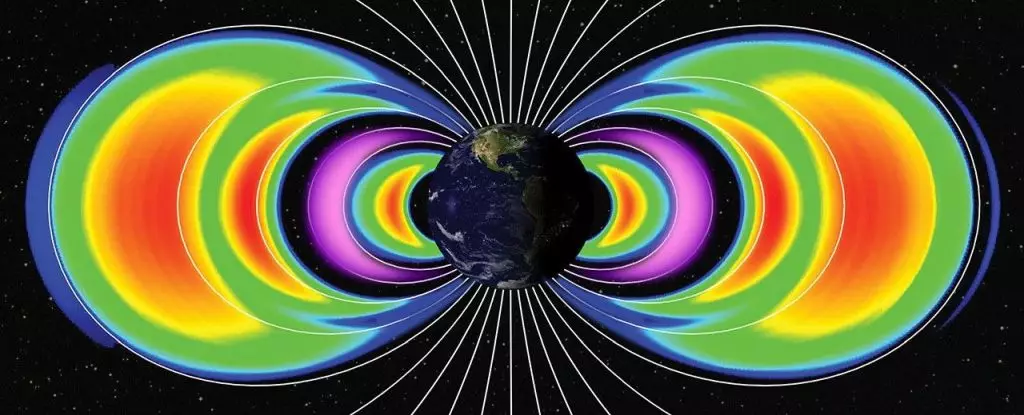In May 2024, Earth experienced an extraordinary solar storm that reverberated through the planet’s atmosphere to the depths of its oceans. Triggered by intense solar activities, including coronal mass ejections and flares, this event not only produced awe-inspiring auroras visible in regions where they are rarely seen but also introduced an unexpected phenomenon: the formation of temporary radiation belts around our planet. As scientists begin to dissect the complexities of this storm, the implications for our understanding of Earth’s magnetic environment are becoming increasingly profound.
Solar storms are not uncommon; however, the one in May 2024 presented an unexpected twist by creating two new belts of radiation comprised of high-energy particles. These belts appeared alongside our well-known Van Allen radiation belts, but they featured a significant difference: one contained energetic protons, a discovery that had previously eluded researchers. This revelation has instigated a wave of excitement within the scientific community, as physicist Xinlin Li reflects on the groundbreaking findings: “When we compared the data from before and after the storm, I said, ‘Wow, this is something really new’. This is really stunning.”
The formation of these belts during the storm was facilitated by the dynamics of Earth’s magnetic field interacting with the solar wind – a stream of charged particles emitted by the Sun. As solar activity intensified, the magnetic field’s capacity to capture and hold these particles allowed for the creation of the new radiation structures.
Earth’s radiation environment is largely characterized by its two permanent Van Allen belts, which serve as a protective shield against the influx of harmful solar particles. However, following the May 2024 storm, researchers documented the presence of an additional belt featuring high-energy particles, including protons, positioned between the inner and outer Van Allen belts. David Sibeck, an astronomer at NASA, emphasized the significance of this discovery: “These are really high-energy electrons and protons that have found their way into Earth’s inner magnetic environment.”
What is particularly remarkable about these new belts is their longevity. Unlike earlier temporary radiation belts that dissipated within weeks, the belts formed during the May solar storm remained intact for an extended period of three months. Even after subsequent solar storms in June and August reduced the density of these belts, a small number of particles persisted. The proton belt, in particular, has the potential to remain stable for over a year, prompting scientists to monitor its behavior to better understand its decay process and potential impacts.
As our reliance on satellite technology continues to surge, understanding the dynamics of radiation belts is crucial for safeguarding these assets in orbit. While the current threat posed by the newly formed radiation belts remains unquantified, their presence raises essential questions about the risks to satellites and other space-based technologies. Engineers are prompted to develop strategies to mitigate potential hazards associated with these high-energy particles, which may interfere with satellite operations and communication systems.
The ongoing observations of the May 2024 storm’s aftermath will inform future strategies to enhance the resilience of our infrastructure. By tracking the longevity and decay rate of these radiation belts, scientists will be better equipped to foresee potential disruptions caused by solar events, thus fostering a proactive approach to space weather preparedness.
The findings resulting from the May 2024 solar storm underscore the importance of continued research into solar activity and its interactions with Earth’s magnetosphere. As we delve deeper into understanding these processes, the insights gained will prove invaluable in safeguarding our technological systems against the ever-evolving threat posed by our Sun.
The May 2024 solar storm serves as a potent reminder of the dynamic relationship between our planet and the cosmos. As scientists embark on thorough investigations to unravel the complexities of these newly formed radiation belts, we stand on the precipice of a new era in space weather science that could hold keys to understanding our planet’s protective mechanisms in an increasingly technological age.


Leave a Reply